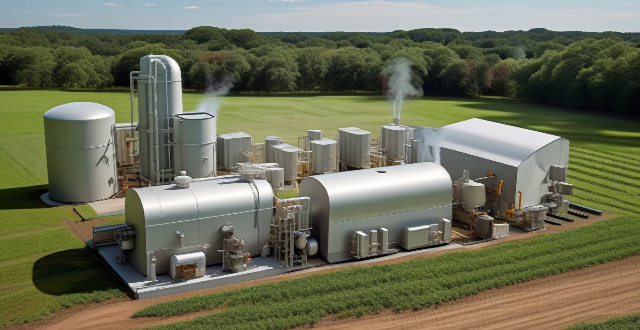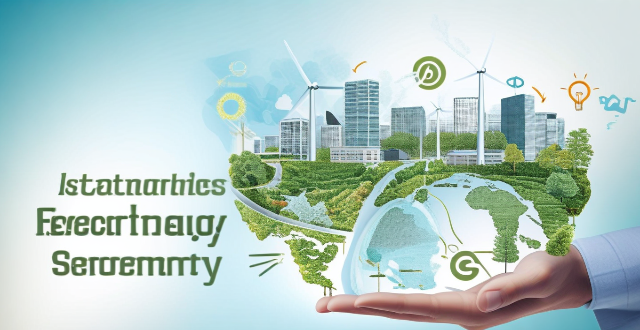Part Hydrogen

How do hydrogen fuel cells work and are they a practical alternative energy source ?
Hydrogen fuel cells are devices that convert the chemical energy of hydrogen into electricity. They consist of an anode, cathode, electrolyte, and external circuit. The process involves splitting hydrogen into protons and electrons at the anode, moving protons through the electrolyte, moving electrons through the external circuit, combining protons and electrons with oxygen at the cathode to form water, and producing heat. Hydrogen fuel cells are renewable, have high energy density, zero emissions, and versatile applications. However, they face challenges such as high cost, limited infrastructure, and safety concerns.

How do hydrogen fuel cells compare with conventional battery technologies ?
Hydrogen fuel cells and conventional battery technologies differ in efficiency, environmental impact, cost, and application. Hydrogen fuel cells have a higher energy density and quicker refueling time but currently rely on fossil fuels for hydrogen production, contributing to greenhouse gas emissions. Conventional batteries are more affordable and have lower upfront costs but require more frequent replacement. In terms of application, hydrogen fuel cells are suitable for transportation and remote power generation, while conventional batteries are widely used in portable devices and electric vehicles. Both technologies have their advantages and disadvantages, making them suitable for different applications.

Are there any drawbacks to using hydrogen as an energy carrier ?
The article discusses the drawbacks of using hydrogen as an energy carrier, including production, storage and transportation, safety concerns, and high costs. It notes that most hydrogen is currently produced from fossil fuels, which results in significant greenhouse gas emissions, and that electrolysis requires a large amount of electricity often generated from fossil fuels. It also mentions that hydrogen gas is highly flammable and requires specialized equipment for safe storage and transportation, and that it has a low energy density compared to other fuels. The article further notes that hydrogen gas is highly flammable and can ignite easily if it comes into contact with an open flame or spark, and that leaks can be difficult to detect due to its low density and lack of smell. Finally, it states that the infrastructure required for hydrogen production, storage, and transportation is expensive to build and maintain, and that the cost of producing hydrogen through electrolysis is currently higher than traditional fossil fuels.

What is the role of hydrogen in the future energy market ?
The text discusses the potential role of hydrogen in the future energy market, highlighting its cleanliness as an energy source and its ability to store renewable energy. It also mentions hydrogen's potential use in transportation and various industrial applications. However, challenges such as infrastructure development, production methods, cost issues, and safety concerns need to be addressed for hydrogen to reach its full potential.

What role can hydrogen fuel cells play in transitioning to a renewable energy future ?
Hydrogen fuel cells are a promising technology for renewable energy transition, offering advantages such as zero emissions, high energy density, and renewable sources. They have applications in transportation, stationary power generation, and industrial applications. However, challenges such as cost, infrastructure, and safety concerns need to be addressed for widespread adoption.

Are there any scholarships available for part-time students ?
Part-time students face unique challenges when it comes to financing their education, but there are still scholarships available for them. Need-based scholarships are awarded based on financial need, while merit-based scholarships are awarded based on academic achievement or other criteria. Employer tuition assistance programs may also be an option for part-time students. Tips for applying for scholarships as a part-time student include starting early, being prepared, and following instructions carefully.

Is drinking smoothies a part of a healthy diet ?
Drinking smoothies can be a part of a healthy diet, but it depends on the ingredients used and how often you consume them. Smoothies can be nutrient-dense, convenient, and customizable, but they can also be high in calories and sugar if not made properly. To make a healthy smoothie, use whole foods, limit added sugars, add protein, balance flavors, and practice portion control.

What are the main sources of sustainable energy ?
The text discusses the various main sources of sustainable energy, including solar energy, wind energy, hydropower, geothermal energy, bioenergy, tidal and wave energy, and hydrogen energy. It also highlights the importance of adopting sustainable energy for environmental impact, economic benefits, energy security, and health considerations. The transition to sustainable energy requires investment, policy support, and technological innovation.

Can strength training be part of a female fitness program ?
**Can Strength Training Be Part of a Female Fitness Program?** Yes, strength training is crucial for women's fitness programs. It offers benefits such as improved muscle tone, increased metabolism, enhanced bone density, and reduced injury risk. To integrate strength training effectively: start with light weights, focus on compound movements, balance it with cardio workouts, and consider professional guidance for personalized plans. This approach ensures a comprehensive and beneficial fitness regimen for women.

How has athleisure become a part of everyday fashion ?
Athleisure, blending "athletic" and "leisure," has become a staple in everyday fashion due to its comfort, health-conscious associations, technological advancements, economic accessibility, and sociocultural trends. Its popularity is driven by comfortable materials, versatile designs, the promotion of wellness, performance fabrics, fast fashion impact, and casualization of workplaces. Athleisure offers practicality and style, making it a go-to choice for many consumers.

What is the potential for clean energy technology to transform transportation ?
Clean energy technology has the potential to revolutionize transportation by reducing emissions, improving air quality, and enhancing energy security. This can be achieved through electric vehicles (EVs), hydrogen fuel cells, renewable energy sources, and smart grid technologies. EVs offer reduced emissions, energy efficiency, lower operating costs, and quiet operation. Advances in battery technology have increased range and reduced charging times for EVs. Charging infrastructure is being developed to support the growing number of EVs. Hydrogen fuel cell vehicles provide long-range travel and rapid refueling while utilizing renewable energy sources. However, they face challenges such as high production costs and limited infrastructure. Renewable energy sources like solar, wind, and hydropower can provide clean electricity for EVs and hydrogen production. Smart grid technologies enable efficient management of electricity demand and supply, supporting the integration of renewable energy into the power grid. Overall, clean energy technology has the potential to significantly transform the transportation sector towards sustainability.

What are some innovative ways to use sports marketing to reach new audiences ?
Innovative ways to use sports marketing include leveraging social media influencers, creating virtual reality experiences, gamification, partnering with non-traditional brands, and localized marketing. These tactics can help reach new audiences and build stronger connections with potential customers.

Are there any proven benefits of offering gym memberships or fitness classes as part of workplace wellness programs ?
The text provides a topic summary of the benefits of offering gym memberships or fitness classes as part of workplace wellness programs. It highlights the advantages in terms of improved employee health and well-being, enhanced workplace atmosphere and culture, and financial benefits for employers. The summary also emphasizes that these programs can lead to reduced stress levels, increased energy levels, improved cardiovascular health, increased employee morale, improved teamwork and collaboration, lower absenteeism rates, reduced healthcare costs, increased productivity, and lower turnover rates. Overall, the text suggests that offering gym memberships or fitness classes as part of workplace wellness programs can have numerous benefits for both employees and employers.

How much water should I drink each day as part of a healthy lifestyle ?
Drinking enough water is crucial for good health, with the "8x8" rule suggesting 2 liters per day as a starting point. Individual needs vary based on activity level, climate, diet, and health status. Signs of dehydration include dry mouth, dark urine, fatigue, and headache. To increase water intake, carry a bottle, set reminders, flavor water, eat hydrating foods, and drink before meals. Personalizing your water consumption based on lifestyle factors ensures optimal hydration.

Is there a natural way to clean stains off my clothes ?
Removing stains from clothes can be challenging, but natural methods like using white vinegar, baking soda, lemon juice, hydrogen peroxide, and salt can effectively clean various types of stains. These techniques are gentle on the environment and clothing.

What is carbon capture technology and how does it work ?
Carbon capture technology is a set of methods aimed at reducing CO2 emissions from power plants, industrial processes, and other sources. The main types are post-combustion capture, oxy-fuel combustion, and pre-combustion capture, each with its specific techniques and challenges. While these technologies offer significant potential in the fight against climate change, they face economic and logistical barriers such as high costs and the need for safe storage solutions. Ongoing research seeks to improve efficiency and reduce costs, making carbon capture an increasingly viable solution in achieving net-zero emissions targets.

Is it possible to remove rust stains from fabric without damaging it ?
Rust stains can be removed from fabric using natural ingredients such as lemon juice and salt, vinegar and baking soda, or hydrogen peroxide. These methods are effective in breaking down the rust and lifting it away from the fabric without causing damage. It is important to test any cleaning solution on a small area of the fabric before applying it to the stain and to allow enough time for each method to work. If one method does not work, try another one until the stain is completely removed. After removing the rust stain, wash the fabric according to its care instructions to remove any residual cleaning solution and prevent further damage.

What are some effective home cleaning hacks ?
The article provides a comprehensive list of cleaning hacks for different areas of the home, such as the kitchen, bathroom, living area, and laundry room. Each section includes various tips and tricks to make cleaning easier and more efficient. For example, in the kitchen, using baking soda and vinegar can help degrease the oven, while steam cleaning with vinegar can easily clean the microwave. In the bathroom, soaking the showerhead in vinegar can remove deposits, and hydrogen peroxide can be used to clean tile and grout. The article also suggests using natural ingredients like olive oil and lemon juice for furniture polish and saltwater spray for ironing clothes. By following these simple yet effective cleaning hacks, readers can maintain a clean and organized home without spending too much time on cleaning tasks.

Is there a natural alternative to bleach that can be used for disinfecting surfaces ?
There are several natural alternatives to bleach that can be used for disinfecting surfaces, including vinegar, hydrogen peroxide, and tea tree oil. These alternatives are effective against bacteria, viruses, and fungi, and are also safer and eco-friendly compared to bleach. Vinegar is inexpensive and easy to find, but has a strong smell and may damage certain surfaces if left on for too long. Hydrogen peroxide is also inexpensive and easy to find, but can be harmful if ingested or inhaled in large quantities and may fade certain fabrics or surfaces if left on for too long. Tea tree oil is a natural antimicrobial agent that is safe for pets and children, but is expensive compared to other natural disinfectants and may cause skin irritation if not diluted properly. By using these natural disinfectants, you can keep your home clean and healthy without exposing yourself or your family to harsh chemicals.

Are there any natural or eco-friendly disinfection solutions that are effective against viruses ?
The article discusses natural and eco-friendly disinfection solutions that are effective against viruses. It mentions four options: lemon juice and salt, white vinegar, tea tree oil, and hydrogen peroxide. Each option has a procedure for use and is effective in killing germs on surfaces. The article concludes that while these solutions may require more time and effort compared to chemical disinfectants, they offer a safer alternative for those concerned about environmental impact and health risks associated with harsh chemicals.

What are the best ways to remove stains from clothes ?
Removing stains from clothes requires pre-treatment, stain removers, home remedies, laundry detergent, and sometimes professional dry cleaning. Pre-treating the stain by blotting it with a clean cloth or paper towel is crucial. Commercial stain removers can be effective for various stains, while home remedies like baking soda and vinegar, hydrogen peroxide, and lemon juice can tackle stubborn stains. Applying laundry detergent directly to the stain and washing it afterward can also work. For delicate fabrics or persistent stains, professional dry cleaning may be necessary. By following these steps, most types of stains can be effectively removed from clothing.

What are the best practices for businesses to report on their environmental impact as part of their CSR initiatives ?
Reporting on environmental impact is crucial for businesses as part of their CSR initiatives. Best practices include setting clear objectives and goals, collecting relevant data, analyzing environmental footprint, developing an action plan, communicating findings, encouraging stakeholder engagement, and continuously improving the reporting process. By following these steps, businesses can demonstrate their commitment to sustainability and transparency while providing valuable information to stakeholders about their environmental performance.